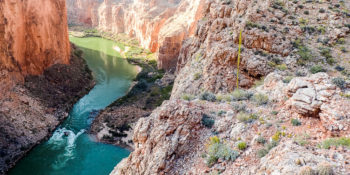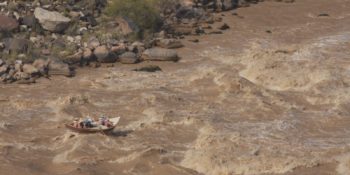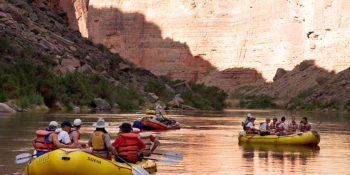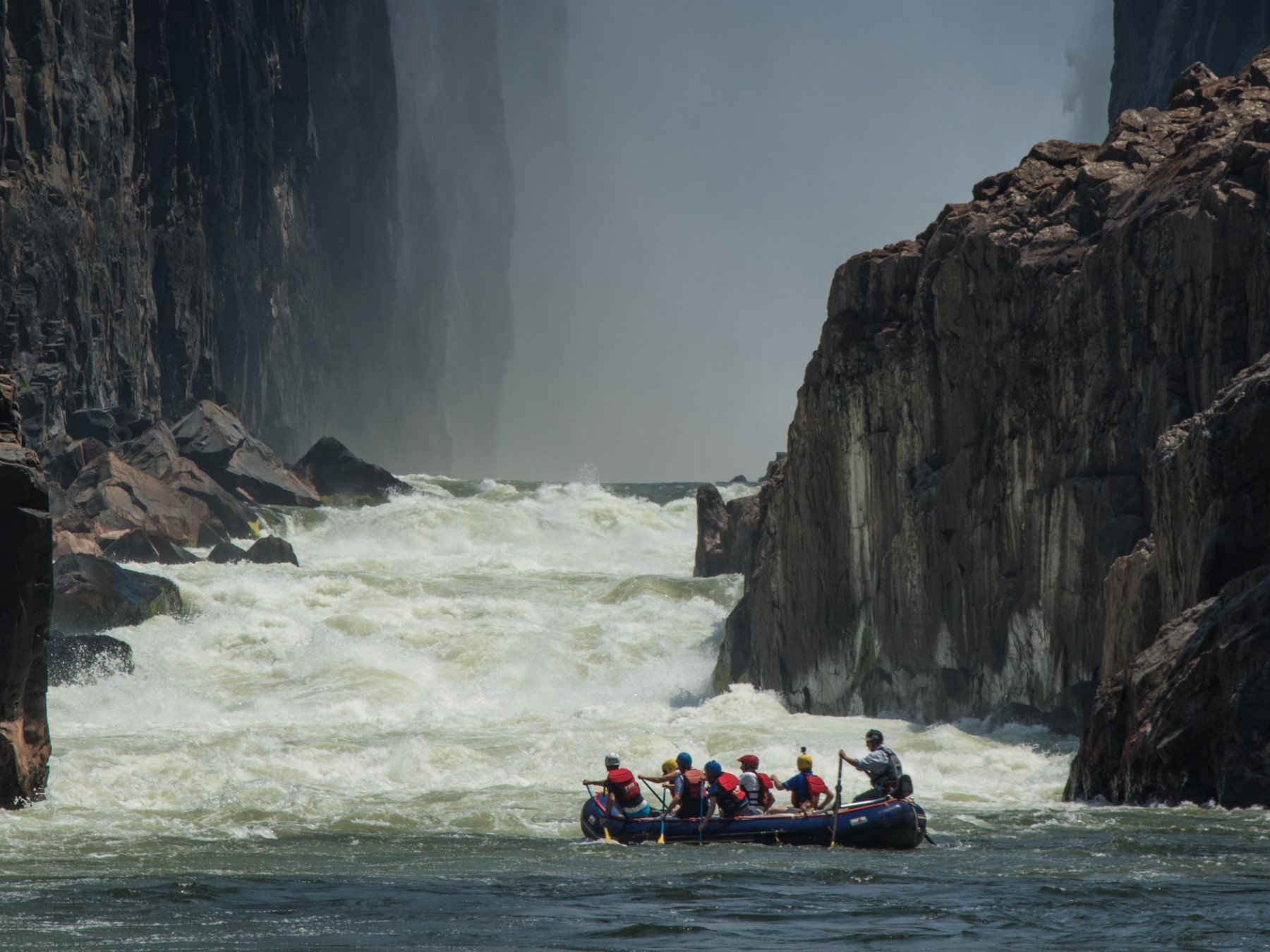
Rapids and Wilderness:
Introduction to White Water Rafting
White water rafting offers a unique blend of wilderness and excitement. Whether you’re seeking a mild float or an extreme expedition, there’s a river rafting trip for you. In this guide, we’ll cover everything you need to know about rafting, including the different types of trips available, types of crafts, safety considerations, and popular destinations.
What is white water rafting?
Whitewater rafting involves navigating a river in an inflatable raft downstream through rapids and calm stretches while maintaining control of the raft often by a team of paddlers or a guide rowing an oar raft. While there are trips that require a high level of fitness, people of all ages from 5 to 80+ regularly take rivers trips.
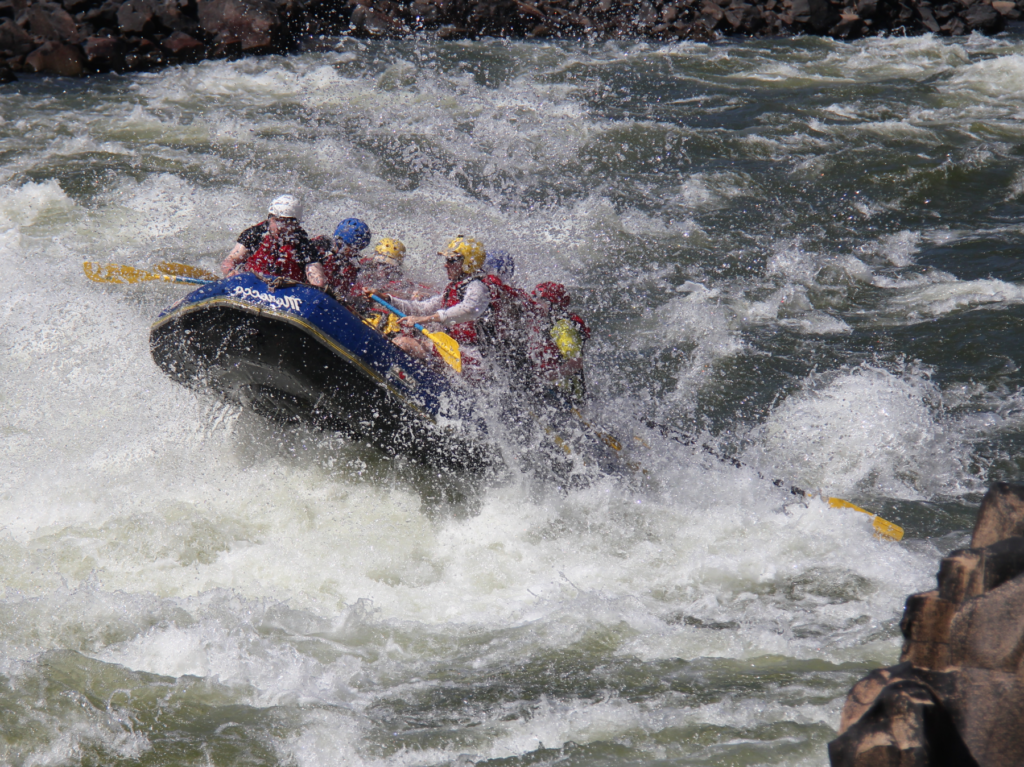
Commercial versus Private Rafting Trips
While both have advantages, private and commercial rafting trips offer distinct experiences. Private rafting trips are typically organized by individuals or groups who provide their own equipment, plan their own routes, and take full responsibility for safety and logistics. These trips often appeal to experienced rafters, many of whom have taken training courses, seeking a customizable adventure and the freedom to set their own pace.
In contrast, commercial rafting trips are run by professional outfitters who supply equipment, plan itineraries, provide trained guides, have knowledge of the area and ensure safety standards, making them ideal for beginners or those who prefer a hassle-free experience. Commercial trips often include additional amenities, such as meals and transportation, allowing participants to focus entirely on enjoying the river. Whether seeking independence or convenience, both options provide unique opportunities to connect with nature and navigate remote rivers.
Types of white water rafting trips
With many different types of white water rafting trips available, each offers a unique experience. Here are some of the most popular types of trips.
Day Trips
A great option for beginners and families, day trips usually last between three and five hours and cover a few miles to more that 20 miles of river. One of the nice things about day trips is they typically are stretches of whitewater that have consistent rapids that are usually within a specific class range. this allows rafters to do a bunch of rapids at a grade they enjoy.
Popular day trip destinations include:
- Lower New River in West Virginia
- South Fork American River in California
- Snake River in Wyoming
- Upper Colorado River in Colorado
Multi-day trips
For those wanting a more immersive experience, multi-day trips can last anywhere from two to 21 days and cover dozens to hundreds of miles of river. During these trips, you’ll typically camp along the riverbank and encounter a range of different rapids, from mild to class V depending upon the river. If you want to learn more, read our posts about the best multi-day rafting trips in the US.
Popular Multi-day trips include:
- Colorado River in Grand Canyon, Arizona,
- Middle Fork of the Salmon River in Idaho,
- Rogue River in Oregon
- Green River’s Lodore Canyon in Utah
- Cataract Canyon in Utah
- Alsek River in Alaska
Video of Multi-day Rafting trip on the Middle Fork Salmon River
High Adventure Trips
For the most experienced and/or adventurous rafters, high adventure trips often feature Class IV and V rapids that require expert navigation and a high level of physical fitness. You’ll find both mental and physical challenge on these trips, and you’ll need to work closely with your fellow rafters.
Popular high adventure trips include:
- Futaleufú River in Chile
- Zambezi River in Zambia
- Franklin River in Tasmania
- Cherry Creek in California
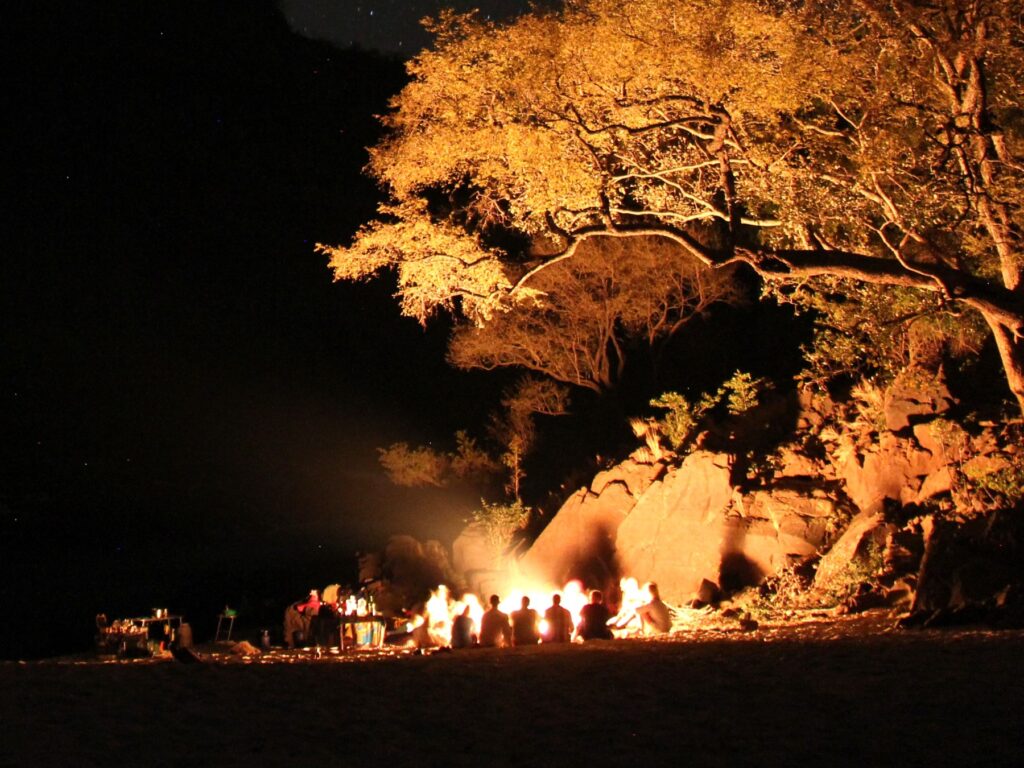
Rafting Safety Considerations
Here are some safety considerations to help maximize your experience and minimize the likelihood of problems on your trip:
- Choose a reputable rafting company that has experienced guides and a good safety record (we can help with this!).
- Wear a life jacket at all times while on the water and a helmet if provided.
- Listen during the safety orientation to know how to minimize your risk.
- Stay hydrated and protected from the sun. Wear sunscreen, a hat, and sunglasses, and drink plenty of water.
- Listen and follow your guide’s instructions.
What happens if you fall out of the raft?
While falling out of a raft is rare, it happens. If you do fall out of the raft, it’s important to stay calm and follow the guide’s instructions especially on more challenging rapids. Most likely, the guide will instruct you to float on your back with your feet pointing downstream, and/or to try to swim towards the raft if it’s within reach.
If you can’t reach the raft, a guide will typically use hand signals to point our your best exit from the river be it an eddy, another raft or shore. Keep your lifejacket snug and dress for swim like having a wetsuit on during a cold day with cold water.
How risky is white water rafting?
White water rafting can be risky, especially on more challenging class IV and V rapids where helmets are required. However, most commercial rafting trips take place on rivers selected for their intermediate level of difficulty with extensively trained professional guides. On many rivers outfitters say there are more accidents getting in and out of the rafts and walking on shore than in the river.
If you’re new to rafting or unsure about your abilities, start with a beginner or intermediate level trip. As you gain experience and confidence, you can gradually move on to more challenging rapids.
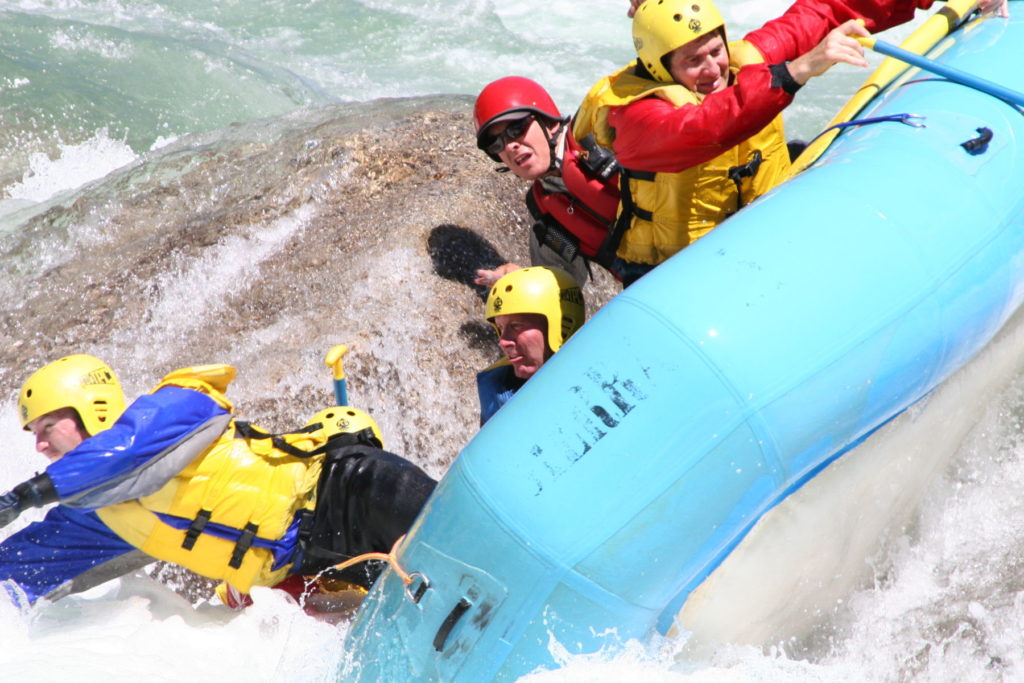
What to bring on a white water river rafting trip
What you should bring on a white water rafting trip will depend on the type of trip you’re taking, but here are some essential items to consider (see a full packing list):
- A swimsuit or quick-drying shorts
- Water shoes or sandals that strap on securely
- A long sleeve shirt for the sun
- Sunscreen, a hat, and sunglasses
- A change of clothes for after the trip
- A waterproof camera or GoPro to capture the memories
Search for Rafting Trips

Find Your Trip
Request a trip search, we’ll find tours meeting your criteria.
*** Our service is free to you and paid for by our partner outfitters. We guarantee the same price as booking directly with the outfitter.
Paddle vs. Oar Rafts
When it comes to whitewater rafting, there are several different types of rafts. The two most common types are paddle rafts and oar rafts, but there are also oar/paddle combo rafts, also known as oar assists. Learn more about types of rafts.
Paddle Rafts
The most common type of raft used for white water rafting on day trips, paddle rafts typically hold four to eight passengers. A professional river guide sits in the back of the boat and steers with a paddle while calling commands to the crew. The passengers (crew) sit on the sides of the raft and paddle through the rapids to help propel the boat forward. Paddle rafts require a high level of teamwork, as each passenger must paddle in sync. This type of raft is best for those who want an active experience.
Oar rafts
On the other hand, oar rafts are guided by a professional river guide who sits in the center of the boat and uses two long oars to steer and propel the boat forward. The passengers sit in the front (and sometime back) of the raft and don’t usually paddle. Oar rafts provide a more relaxed, stable experience and allow passengers to focus on the scenery and the rapids without worrying about paddling. These rafts are most common on multi-day trips where they are called gear rafts or gear boats and carry people as well as equipment.
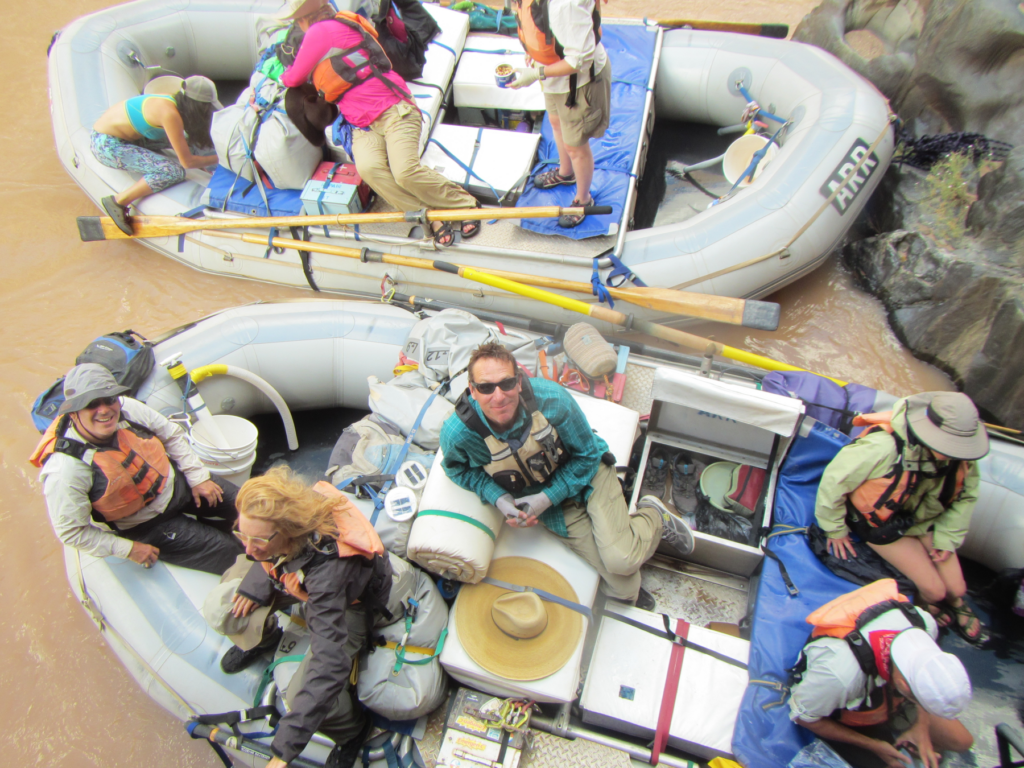
Oar/paddle combo rafts
These rafts are a hybrid of the two types. A guide sit in the center or in the back of the raft and uses two oars to steer and help propel the boat forward. But the passengers also paddle while sitting on the sides of the raft.
Oar assists can be a good option for groups with varying levels of paddling experience, as the guide can adjust the level of paddling required based on the passengers’ abilities. Used on the most challenging rivers like the Class V Cherry Creek and Futaleufu River these craft provide the highest level of control and power.
Ultimately, the type of raft you choose will depend on your personal preferences and the type of experience desired by your group. If you enjoy teamwork and want an active role in navigating the rapids, a paddle raft might be the right choice for you. Those preferring a more relaxed experience that focuses on the scenery may prefer an oar raft. And if you want a combination of both, an oar/paddle combo raft could be the perfect option.
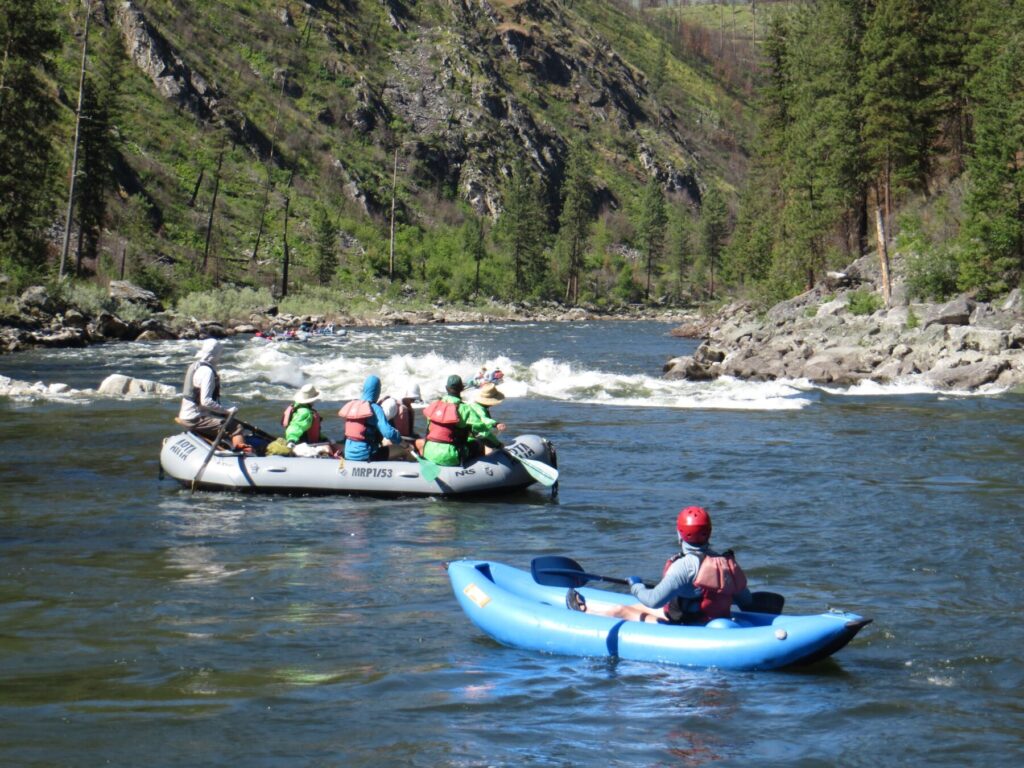
Inflatable Kayaks
While not a raft, inflatable kayaks, often called “duckies,” are a common addition to many multi-day rafting trips. Offering a more adventurous way to experience the river, these lightweight crafts are easy to maneuver but also much more likely to flip in rapids. On commercial rafting trips, inflatable kayaks are often used alongside larger rafts, allowing individuals that want more excitement while others can stay in the more stable rafts. Inflatable kayaks make rivers like the Rogue great for multi-generational trips.
Conclusion
White water rafting is an exciting and rewarding way to enjoy nature. Whether you’re looking for a peaceful float or an extreme adventure, there’s a rafting trip out there that’s perfect for you. Reach out to us if you want help finding a rafting trip or just have more questions about rafting in general.
Video for Grand Canyon Rafting Company Paddle Trip
Questions and Answers about Whitewater Rafting:
How long does a whitewater rafting trip last?
The length of a whitewater rafting trip can vary depending on the river, the level of difficulty, and the trip type. Day trips typically last 4-6 hours, while multi-day trips can last anywhere from 2 to 21 days. See our favorite rafting and camping trips.
The best time of year for whitewater rafting depends on the river and the location. In general, the best time to go rafting is during the spring and early summer, when the snowmelt causes the river to flow faster and higher. Some rivers with consistent flows year-round and can be rafted at any time. It’s best to check with the rafting company for their recommended season. Learn about how the snowpack effects rivers or how rafting Grand Canyon changes during the season.
Yes, children can go whitewater rafting, but it’s important to choose an appropriate river and trip type. Younger kids, 6 to 8 years-old, typically stay on Class II and easy Class III river. Many commercial rafting companies offer family-friendly trips on calmer rivers with mild rapids. Children in general should be at least 50 pounds and comfortable in the water, and as with adults should always wear a life jacket.
If you fall out of the raft, it’s important to stay calm and follow the guide’s instructions. Most likely, the guide will instruct you to float on your back with your feet pointing downstream, and to try to swim towards the raft if it’s within reach. If you can’t reach the raft, you’ll be directed to a designated rescue spot where a safety kayaker or guide will help you back into the raft.
While it’s important to be comfortable in the water and have basic swimming skills, you don’t need to be a strong swimmer to go whitewater rafting. All rafters wear a life jacket, which helps you float if you fall out of the raft.
While a basic level of physical fitness is required for whitewater rafting, it’s not an extreme sport that requires high levels of athleticism. Most commercial rafting trips are suitable for people with a range of abilities and fitness levels. However, it’s important to be in good health and free of any medical conditions that could be exacerbated by physical activity or exposure to the elements. Read about getting fit for your rafting trip.
While some inherent risk exists with any adventure sport, whitewater rafting can be done safely. Professional guides with extensive training and experience lead most commercial rafting trips. All rafters wear a life jacket and on harder rivers a helmet in addition. Additionally, most commercial rafting trips take place on rivers carefully selected for their level of difficulty.
Questions and answers about whitewater rafting gear:
It’s important to dress appropriately for your rafting trip. Wear quick-drying clothes, such as a bathing suit or shorts and a t-shirt, and closed-toe shoes. Depending on the weather and water temperature, you may also want to wear a wetsuit, neoprene booties, or a splash jacket. See our Grand Canyon Rafting packing list.
Most commercial rafting companies provide all necessary equipment, including a life jacket, helmet, paddle, and raft. Some companies may also provide wetsuits, booties, or splash jackets, depending on the weather and water conditions. On multi-day trips most companies provide water proof bags for your gear and either provide or rent tents, sleeping bags and pads (but you can bring your own). See a sample multi-day rafting packing list.
Most commercial rafting companies running multiday trips encourage people to bring cameras (in water proof cases) . Cameras or other electronic devices can be easily lost or damaged on the river. Many day trip companies offer photo packages or have professional photographers on the river to capture the experience for you. Learn more about taking photos while rafting.
Paddle rafts are the most common type of raft used for whitewater rafting. They typically hold four to eight passengers, and each passenger is given a paddle to help navigate the rapids. Paddle rafts require a high level of teamwork, as each passenger must paddle in sync to steer the raft.
Oar rafts are typically used for calmer rivers and for carrying more gear. They’re operated by a guide who uses oars to steer the raft, and passengers typically don’t paddle. Read more about types of rafts.
Start Planning Your Best Adventure
Dispatches from adventure tours around the world and tips for intrepid travelers. Read Our Blog
Jon Hamilton’s Up Run of the Colorado River
New Zealander, Jon Hamilton, the son of jet boat inventor Bill Hamilton, led the first successful upstream run of the Colorado River through the Grand Canyon, arriving at Lee’s Ferry with three of the four boats after one sank in Grapevine Rapid, on July 12, 1960. Previous attempts to run the rapids in reverse had been unsuccessful.
Rafting the Grand Canyon in 1896
Rafting the Grand Canyon in 1896 Launching in Green River, Wyoming On August 27, 1896, George Flavell and Ramon Montez launched their homemade, fifteen-and-a-half-foot boat, the Panthon, from Green River,…
Grand Canyon Rafting Itinerary: A Typical Day
A little after sunrise, the day starts with a morning call for “CoFFEEee!” At this point most people start to rise and many partake in hot coffee, tea, and/or orange juice. A little later a second call will be made for “Breakfast!!!” at this point the later risers will be up and everyone will get themselves some breakfast.
Keep Reading > Grand Canyon Rafting Itinerary: A Typical Day



